Below, you will find a lot of examples of composites in your daily life.
They are discussed in several subcategories:
- sports (cycling, skiing, tennis, canoeing, sailing,...)
- cars and motorcycles (hood, tyre, fenders, spoilers, brakes,...)
- house and garden (fenceboards, decking, bathroom fixtures,...)
- consumer goods (electronics, notebooks,...)
- health care (dentures, prostheses,...)
- travelling (aircraft interior, suitcases,...)
- public infrastructure (bridges, utility poles,...)
This overview is a personal compilation of a lot of news articles that appeared in recent
years on the Netcomposites website.
Composite materials are very attractive for all kinds of sports
activities. In many sports applications, weight reduction is the primary reason
to move to composites.
One of the first sports disciplines where composites were applied, was the
Formula One. Thanks to their high energy absorption for a very low weight, composites
are widely used in all crash protection parts in Formula One race cars.
All Formula One race cars have a carbon fibre monocoque structure that protects
the driver for all crashes. These structures are designed with advanced
computer simulations, such as the monocoque for the Minardi Formula One race team,
or the carbon fibre monocoque chassis of the Porsche RS Spyder race car.
Also in motor racing, composites are widely used. Aston Martin has returned in 2005
to the international motor racing scene with a carbon fibre panelled DBR9 race car.
 |
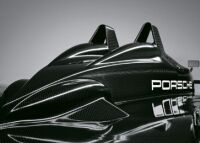 |
 |
|
Minardi Formula 1 |
Porsche RS Spyder racing car body |
Aston Martin's carbon fibre panelled racing car |
One of the most well-known composite applications in sports is the so-called
"carbon bike". The frame consists of carbon fibre-reinforced epoxy which makes the
frame very stiff and lightweight.
BMC, the Swiss high-tech bicycle brand, and Easton Sports have developed the
"Pro Machine" for the Tour de France with a carbon fibre frame weighing less than
1 kg.
Carbon fibre bikes were also used by the British cycling team in the Athens
olympics (Greece, 2004). The bikes were designed and built by the Advanced Composites
Group (ACG).
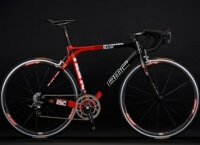 |
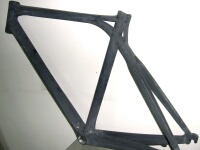 |
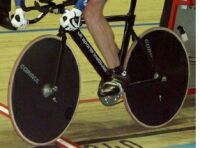 |
|
BMC "Pro Machine" carbon/epoxy bicycle |
BMC frame with carbon/epoxy pre-preg |
Winning carbon fibre bike at the Athens Olympics 2004 |
Hexcel composites and Trek combined to produce a carbon fibre prototype frame
which carried Lance Armstrong to his record-breaking seventh Tour de France
victory. Trek supplied Armstrong with two new bikes: the SSLX climbing bike
weighing only 6.8 kg (15 pounds), and the TTX time trial machine.
The German bicycle manufacturer Canyon Bicycles GmbH has developed a racing
bike chassis of carbon fibre-reinforced polymer, together with the Institut
fur Verbundwerkstoffe (IVW). Its high stiffness exceeded for the first time
the magical limit of 100 of the stiffness to weight ratio, as the frame and fork
have a weight of only 1260 grams.
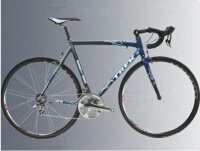 |
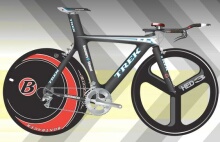 |
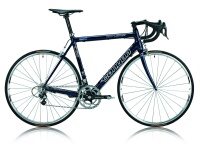 |
|
Lance Armstrong's Trek Madone SSLX climbing bike |
Lance Armstrong's Trek TTX time trial machine |
World record racing bike developed by IVW |
Other popular applications can be found in skis, surfboards and snowboards.
They are typically made of high density polyurethane foam core with a thin
composite skin.
 |
 |
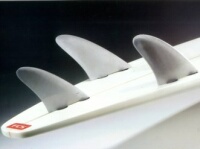 |
|
Top ski design with foam cores |
Surfboard with carbon nanotube reinforced epoxies |
Surfboard fins with polyurethane foam core |
Also in other recreational sports, composites can be found.
The performance of darts can be significantly improved by using carbon fibre for
the shaft of the dart.
Xtreme Peaks Pty Ltd. designed the first mobile rock climbing wall made of composites.
The semi-circular structure is 8 metres high, has five different routes of different
difficulty and top rope attachment points.
Gurit supplied carbon fibre composite to manufacture two Olympic recurve bows. These
bows smashed world records at the Archery Championships in Hungary (2006).
 |
 |
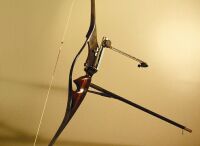 |
|
Dart made from carbon fibre-reinforced nylon |
Mobile rock climbing wall from glass/polyester composite |
Carbon fibre Olympic recurve bow |
There are also a lot of experiments with Carbon NanoTubes (CNT) in composites
for sports applications. These Carbon NanoTubes are very small carbon particles
(size about one ten-thousandth of a millimeter) that are added to the polymer resin to
increase its toughness and stiffness.
Easton Sports has teamed up with Zyves to introduce carbon nanotube technology
to baseball bats and hockey sticks.
Carbon nanotubes are still very expensive to use, but engineers at the Fraunhofer
Technology Development Group TEG in Stuttgart have devised a method that enables
carbon nanotubes to be processed at low cost. Among the first products are the Vokl DNX
tennis racquets. Carbon nanotubes are used to reinforce the frame at the points
subjected to the highest stress.
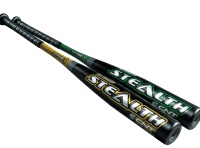 |
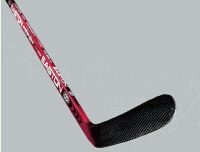 |
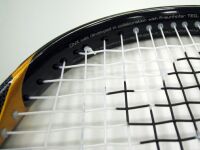 |
|
Carbon fibre bat using Carbon NanoTube (CNT) technology |
Hockey stick with Carbon NanoTube (CNT) technology |
Carbon NanoTubes (CNT) in tennis racquet frame |
Due to their excellent corrosion resistance and durability, composites are applied
frequently for manufacturing hulls, decks, masts and booms of sailing yachts, catamarans and
trimarans (three-hulled vessel).
One of the most famous carbon fibre trimarans is probably that of Dame Ellen MacArthur,
who sailed around the globe, non-stop, single-handedly, in 71 days 14 hours 18 minutes and
33 seconds.
The Seawind 1160 catamaran won the award for Best Sailboat in 2005 and has benefited
from the extensive use of composites.
Mirabella V is currently the largest single masted sailing yacht with a full
composite hull, carbon fibre mast and booms.
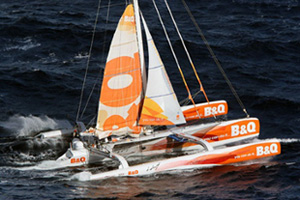 |
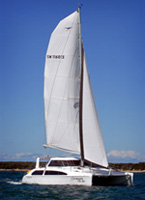 |
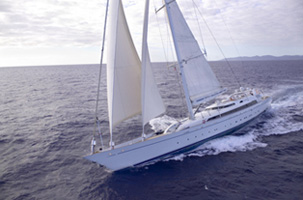 |
|
Ellen MacArthur's carbon fibre trimaran |
Seawind 1160 catamaran |
Mirabella V largest composite sailing yacht |
Probably the most renown sailing competition is the America's sailing cup.
In that competition, all teams make extensive use of composites for hulls, decks,
masts and booms.
This knowledge is then transferred to the recreational boating market. And even
in most unexpected components, composites are integrated. Exit has introduced
carbon fibre steering wheels for sailing yachts into the market. Due to their
very low weight, they provide a much lower rotational inertia for a much more
responsive helm.
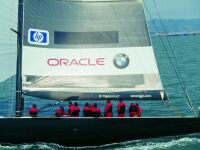 |
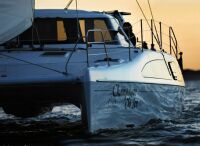 |
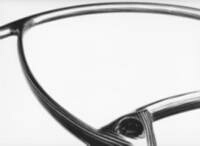 |
|
America's sailing cup |
Sailing yachts with composite masts and booms |
Carbon fibre steering wheels for sailing yachts |
Milliken introduced a new line of kayaks made with Tegris, a 100 % polypropylene
thermoplastic composite. Polypropylene fibres are embedded in a lower melt polypropylene
matrix. The material is fully recyclable and impact resistant.
Impact resistance is also needed in water sports, such as jetski, where the bottom
composite panel is subject to slamming all the time.
 |
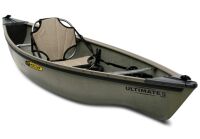 |
 |
|
100 % polypropylene kayak |
Tegris fully recyclable kayak |
Jet ski with chopped fibre Sheet Moulding Compound (SMC) |
In automotive applications, composites are all around us. Just as in sports
applications, weight reduction is pushing the designers to use more and more
composites. The examples are numerous.
DaimlerChrysler has introduced the world's fastest open-top four-seater, the
Mercedes CLK DTM AMG Cabriolet. Numerous body components are made from particularly
strong and lightweight carbon fibre reinforced plastic, for example the bonnet, doors,
front wings, flared rear wheel arches and aerofoil. Moreover the car body is made of
carbon fibre composite.
In its prestige vehicles (Mercedes Benz CL and CLK ranges, Maybach 57 and 62 models)
DaimlerChrysler uses composite decklids. They are fully permeable to radio signals,
which enables GPS, GSM and AM antennae and amplifiers to be invisibly mounted within
the decklid.
DaimlerChrysler has also been awarded for its innovative combination of polypropylene thermoplastic resin
and banana plant fibre for the underfloor protection of its passenger cars. The
product is resistant to stone strike, exposure to the elements and dampness. The company
claims that the use of banana fibre can bring about primary energy savings of
60 percent or more, compared with glass fibre production.
 |
 |
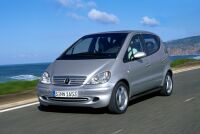 |
|
Mercedes CLK cabriolet with lightweight carbon fibre body |
Sheet Moulded Compound (SMC) composites for DaimlerChrysler decklids |
Mercedes A class with underfloor protection in banana fibre composite |
Also BMW goes for composites. The BMW M6 has an overall weight of only 1710 kg to generate 507 bhp (brake horsepower).
The front wings, the roof and deck lid are made of composite.
The composite roof is 6 kg lighter than a conventional steel roof and it is bonded
to the automobile body frame with a special Ashland adhesive.
In the BMW M3 model, the aluminium bumper beam has been replaced by a glass/polyamide
bumper beam. A weight reduction from 7 kg to 3.1 kg was realized, and its crash
performance was three to four times better than the metal beam.
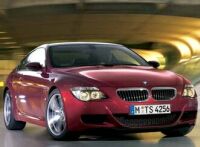 |
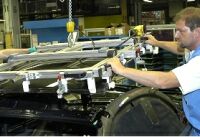 |
 |
|
BMW M6 with carbon fibre roof |
Bonding of carbon fibre roof to BMW M3 CSL body frame |
Glass/polyamide bumper beam for BMW M3 |
Composites are used in a lot of other sporty cars. The Peugeot 907 has been
introduced with a complete carbon fibre bodyshell. Both the Lotus Europa S and the
Lotus Elise 'Load Lugga' have composite body panels and a very advanced composite
energy absorbing front crash structure.
 |
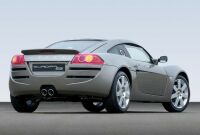 |
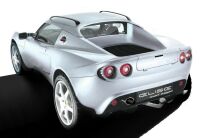 |
|
Peugeot 907 with carbon fibre bodyshell |
Lotus Europa S with composite body panels |
Lotus Elise pickup with composite body |
Maserati has launched a limited edition model of the carbon fibre GranSport.
The complex shaped fenders of the Chevrolet Corvette Z06 are made of composite,
weighing just 3.5 pounds.
The 2006 Corvette's outer door panels (120 cm by 60 cm), roof bow and tonneau
are made from fibreglass-reinforced composite.
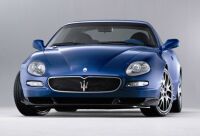 |
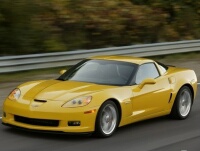 |
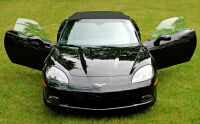 |
|
Maserati Gransport MC Victory with carbon fibre body |
Chevrolet Corvette Z06 with carbon fibre fenders |
2006 Chevrolet Corvette with Sheet Moulded Compound (SMC) door panels |
Apart from the car body, a lot of other car components are made of composites.
Goodyear has introduced the new Goodyear Eagle ResponsEdge Technology tyres. The outboard
sidewall of the tyre is reinforced with a carbon fibre insert that provides stiffness
for responsive handling and steering precision.
Kahn Laboratories have designed a 6 kg road wheel to reduce weight and radial
inertia, thus improving handling, acceleration, braking times and overall
performance. The wheel consists of a carbon fibre rim with magnesium centre.
The braking system of many modern cars is also equipped with fibre-reinforced ceramic
brakes. The ceramic material's composite structure is made up firstly of silicon
carbide. The high-strength carbon fibres are then embedded in the base material to
absorb the stresses that occur in it. Audi introduced those brakes in the Audi A8,
resulting in a weight saving of some 5 kg, or around 50 %, per wheel. The service life
is up to 300,000 kilometres, four times greater than that expected of a steel disc. Plus,
the degree of wear over the brake's service life is mere 0.5 millimetres.
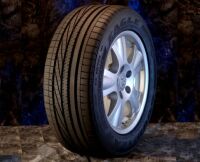 |
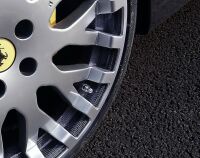 |
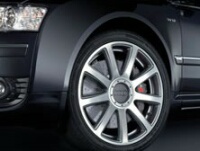 |
|
Goodyear tyres with carbon fibre sidewalls |
Ultra-light carbon fibre wheel (6 kg) |
Carbon fibre-reinforced ceramic brakes for Audi A8 |
Composites are also present in the car's interior.
Fiberforge Harness Composite Technology has produced the Genus concept seat for the
future automotive seating. The seat is made from continuous carbon fibre and nylon resin.
The newly designed dashboards for the VW Golf, VWEOS and Audi A5 Coupe are made of
long-fibre-reinforced thermoplastics. On top of this thermoplastic composite, a
fine polyurethane foam is applied, creating a soft-touch effect. Finally, a slush
skin, usually of PVC, is applied on the foam surface to give the dashboard its
special visual appeal.
The Maserati Quattroporte Sport GT has a carbon fibre interior.
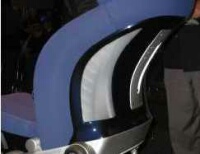 |
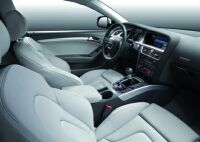 |
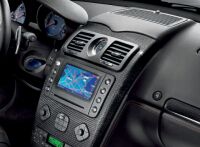 |
|
Genus thermoplastic concept seat for future automotive seating |
Long-fibre-reinforced thermoplastic dashboards for Audi and VolksWagen |
Carbon interior for Maserati Quattroporte Sport GT |
To solve the boot space problem, you can buy a fibreglass composite trailer,
or a composite storage box.
Boot space is also a problem in the T-Rex three-wheeler superbike, a composite
motorcycle with a glass fibre-reinforced body and carbon fibre windscreen and
headrest.
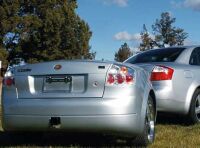 |
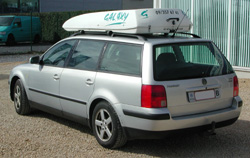 |
 |
|
"extra storage" fibreglass trailers for any passenger sedan |
SDS Deckline storage box |
T-Rex three-wheeler Superbike |
Brammo Motorsports has launched the Enertia, said to be the world's first
production battery powered plug-in electric motorcycle. The Enertia utilizes a
carbon fibre chassis producing an ultra strong, light-weight vehicle platform
of just 275 lbs.
Just like in cars, carbon fibre-reinforced ceramic brakes are gradually introduced
into the motorcycle market. Starfire Systems has developed a new generation
of ceramic composite brake rotor and pad combination.
BMW designed a futuristic composite helmet for its new cross-country BMW HP2
motorcycle.
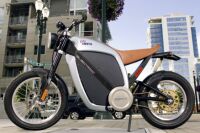 |
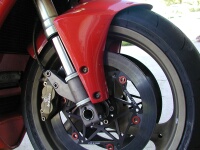 |
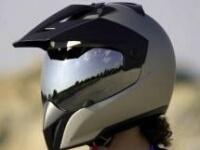 |
|
Electric motorcycle with carbon fibre chassis |
Starfire's ceramic composite brakes |
BMW futuristic composite helmet for cross-country BMW HP2 motorcycle |
In and around your house, the use of composites is still quite limited,
although some nice applications are emerging.
Designers like to experiment with new materials, and composites are one of them.
They are integrated in design furniture, such as the Leap office chair by Steelcase Inc.,
or the Orbit Chair by Bernhardt Design.
At the Cologne International Furniture Fair, probably the world's biggest sun blind,
a 4 m high and 60 m long glass fibre construction, was on show.
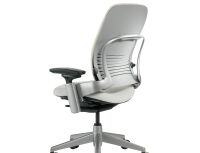 |
 |
 |
|
Long-glass-fibre composite in Leap office chair |
Composite orbit chair by Bernhardt Design |
Composite sun blind |
A large increase in composites can be found in the construction of maintenance-free
composite doors. The doors have glass fibre facings, inner frames of a high
density composite material and a core of rigid polyurethane foam that fills
the voids completely and bonds to all surfaces.
An even more expanding market is that the composite decking market. The so-called
wood-plastic composites and plastic lumber have the look and feel of wood, but
have a much better durability and low maintenance requirements. Plastic lumber is used
in fencing installations, while wood-plastic composites are also used for outdoor
decking, window and door components, playground equipment and site and leisure
furniture.
The adhesion of wood fibres with plastic is not easy to achieve, because wood and plastic
are like oil and water, and do not mix well. Wood is hydrophilic - it absorbs water - and plastic
is hydrophobic, repelling it. A "compatibilizer", typically a polymer that bridges
the interface between the wood and plastic in these products, improves stress
transfer and increases their strength and stiffness.
Teknor Color has introduced a color masterbatch for wood-plastic composites, that combines
colour, UV absorber and biocide to control fungal growth. They can also incorporate
pigments whose high level of infrared reflectance reduces heat buildup in deck
components, which can cause polymer degradation.
 |
 |
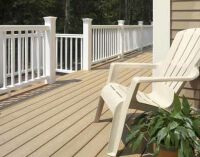 |
|
Maintenance-free doors with glass fibre facings |
Wood-plastic composites for composite decking |
Composite decking with biocide-containing masterbatch |
A few examples of wood-plastic composites and plastic lumber for privacy fence boards,
fencing, colour composite railings, or fencing in equestrian facilities.
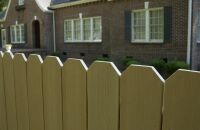 |
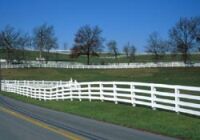 |
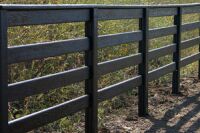 |
|
Lightweight composite privacy fence board |
Wood-composite railings in different colours |
Lifetime Lumber for use in equestrian facility |
Another well-known application of composites is the manufacturing of swimming
pools. Typically the pools are constructed with chopped fibreglass mat and polyester
or vinylester resins. Telene has introduced fibre-reinforced DCPD resin, a new
composite material, that allows for tiling on top of the composite structure, so that the
water line can be decorated with ceramic tiles.
And if you want to heat the water of your swimming pool, you can install a solar
collector on your roof. The French companies MIS and Saint-Gobain Vetrotex have
developed a collector out of glass fibre composite. The collector is corrosion-proof,
water-resistant, fully recyclable and much more efficient, as the fluid content is almost
ten times greater than in a traditional collector.
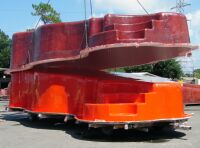 |
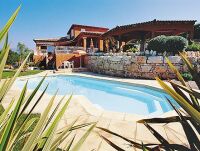 |
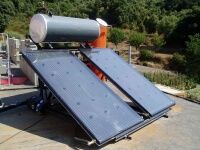 |
|
Chopped fibreglass composite for high quality swimming pools |
Composite swimming pools |
Glass fibre thermoplastic sheets for solar collector |
Finally, some nice innovations with composites are shown below.
Bayer MaterialScience has introduced the Formula One bathroom, where two modern
polyurethane products are used to make the Formula One bathtub.
The same polyurethane foams were applied by a design student from the UK to add
acoustic insulation to a toilet seat. The toilet seat reduces noise by 40 percent
and is ideally suited for parents who may not flush toilets at night in case it might
wake up the young children.
In a large development program "Windows of the future for houses of the past", the Danish
window manufacturer Pro-Tec Vinduer A/S developed a fibre-reinforced composite window
frame. The new windows ensure that home-owners will no longer have to contend
with condensation, and heating bills can be reduced. The GRP material prevents
thermal bridges and insulates very well. Moreover, the window cannot rot. It has
a very long service life that is well-suited to the fluctuating weather conditions
of Northern and Central European countries, and requires practically
no maintenance. Paint does not peel because it adheres well to the GRP material,
yet homeowners are still able to change colours if they like.
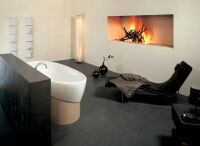 |
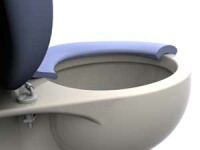 |
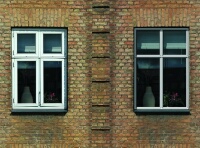 |
|
Formula 1 bathtub in short fibre composite |
Toilet seating with integral skin polyurethane foams reduces noise by 40 % |
Better insulated windows with glass fibre profiles |
Although a lot of composites are used in consumer goods and electronics,
it is hard to discover them, because they are usually integrated in the interior
and the exterior housing is typically made of unreinforced plastics.
Yet a few nice examples are shown here. Acer was the first to present a carbon
fibre cased Ferrari 4000 notebook. Later on, Sony also introduced the carbon
fibre VAIO notebook.
Composite sandwich material is used in the Bowers & Wilkins (B&W) loudspeakers. The composite
material fulfils both requirements of maximum sensitivity and damping, thanks to
the combination of the stiff carbon fibres and low density Rohacell foam. The high
mechanical performance of the material strongly reduces the deformations normally
encountered in traditional cone materials under loads and so prevents sounds
colouration. The loudspeakers are also used in the most prominent places, for
instance the Abbey Road Studios in London, where among others the Beatles recorded
many of their songs.
 |
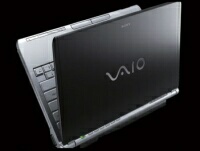 |
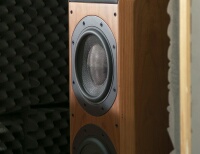 |
|
Acer's first carbon fibre notebook |
Sony's carbon fibre VAIO notebook |
Composite sandwich material for Bowers & Wilkins (B&W) loudspeakers |
For many years now, composites are investigated for application in prosthetic
devices, such as hips and other implants. Gradually they become a superior
alternative to titanium alloys in the development of implantable load-bearing
medical devices that require extra strength and biocompatibility.
Signus Medizintechnik and Icotec have developed the first cervical plate on the market
that is made of carbon fibre-reinforced thermoplastic PEEK resin. The benefits are
an excellent fatigue resistance and an artefact free imaging procedure (CT and MRI)
for accurate and reliable post-operative monitoring. Problems with imaging often relate
to difficulties interpreting radiographs taken through casts or fixation devices
because the image quality is degraded as a result of absorption or scattering of X-rays.
Carbon fibre-reinforced PEEK polymer is one of the most radiolucent of the composite
materials.
Also for prosthetic hips, carbon/PEEK composite is very popular, because it has
a very high compression strength durability and its stiffness closely matches that
of cortical bone, which is very important to prevent bone resorption.
The Canadian designer Sebastien Dubois has won the world's biggest design award
for his concept "Mobility for Each One", a prosthetic foot which costs only 8 USD to
produce. The prosthetic foot is made of glass fibre-reinforced composite and is intended
to help civilians who are mutilated by landmines.
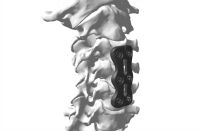 |
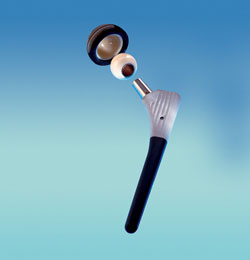 |
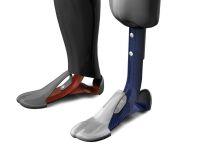 |
|
Carbon fibre-reinforced PEEK for cervical plate implant |
Carbon fibre PEEK hip prosthesis |
Glass fibre composite for 8 USD prothetic foot |
Innovations with composites are also found in other health care applications.
Carbon fibre needles are being used during minimally invasive spine surgery,
where magnetic resonance imaging is used to monitor the operation.
One method of treating a slipped disk is to puncture the spinal disks, which involves
injecting medicine into the injured area of the body with a
thin needle. To be able to monitor the operation at all times and
position the instruments accurately, the surgeon requires an image of the
affected area, obtained using magnetic resonance imaging (MRI).
The problem so far, however, was that conventional metal instruments interfere
with the magnetic field of the MRI and distort the picture.
A finished needle with one working channel has a diameter of 0.8 millimetres.
Needles with three channels are a little thicker, measuring 1.2 millimetres.
One channel, for instance,contains an endoscope that illuminates the tissue
to be treated. Via the same route, the reflected light reaches a camera,
and the operator sees a moving image on the monitor. The fibre
in the second channel conducts laser light, which the surgeon can use
to cut or weld tissue. The third channel serves to induct rinsing
liquids or medication. In this way, several stages of
treatment can be carried out and monitored simultaneously.
The needle is suitable for spinal pain therapy, to inject contrast medium
into joints for arthrography, and for puncturing cysts.
Vistasp Karbhari, a professor of structural engineering at UC San Diego,
has assessed fibre-reinforced polymer composites for dental bridges.
By changing the type and orientation of the reinforcing fibres, they can optimize
these composite materials to match and improve performance of teeth, for greater
durability, toughness and resistance to breakage.
The Scottish Ambulance Service has taken delivery of up to 180 Volkswagen LT46 coach-built
ambulances with a glass fibre-reinforced body. The vehicles are built to
conform to CEN (Certification of European Norm) standards;
this dictates that all cabinetry and equipment within the vehicle
remains intact in the event of a collision.
 |
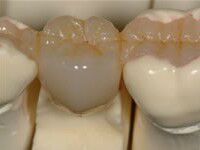 |
 |
|
Carbon fibre needles for minimally invasive spine surgery |
Fibre-reinforced composites for dental bridges |
Coach-built emergency vehicle with glass fibre body |
Most probably, the biggest race for composites is going on in the aerospace
industry right now. Both Airbus and Boeing have decided to increase the share
of composites in their new airplanes considerably.
The largest airplane ever built is the new superjumbo Airbus A380. It has a
capacity of 555 passengers, an overall length of 72.7 m and a wingspan of 79.8 m.
The share of composites is 20 %.
Composite parts are shipped from the United Kingdom, Spain and Germany to France,
where the airplane is assembled in Toulouse.
The engine noise has been reduced with 3 dB compared to the Boeing 747, thanks
to a single-piece composite engine inlet.
 |
 |
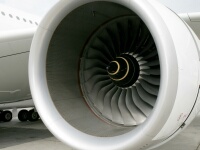 |
|
Superjumbo Airbus A380 with 20 % composites |
A380 assembly in Toulouse (France) |
Single-piece composite engine inlet for Airbus A380 |
And the next generation of aircraft will use even more composites. The Airbus A350
will have all-composite wings, and its competitor, the Boeing 787 Dreamliner, will
have about 50 % composites. The fuselage was reduced by almost 20 % in weight by moving
to composites, while it enables to have bigger windows, lower cabin altitude
pressurization and higher cabin humidity.
 |
 |
 |
|
Airbus A350 with all-composite wings |
Boeing 787 Dreamliner with 50 % composites |
Boeing Dreamliner composite fuselage section |
Weight reduction is a key issue for every component in the aircraft.
Fortron has replaced the seating elements from aluminium to a carbon fibre-reinforced
thermoplastic composite, resulting in an overall weight saving of total 72 kg
for every A380 with 555 seats.
ANA has developed a new economy class carbon fibre seat for use on domestic flights.
The new design increases the passenger leg room by 5 cm, and the carbon fibre-reinforced
plastic frame makes it 5 % lighter than the newest aluminium frame seats currently in use
on ANA's fleet, meaning less fuel burn and fewer emissions.
Nordam has received approval from Boeing to supply the first composite window frame
for a commercial airliner application. The new low density, high strength composite
frame results in almost a 50 percent weight savings over a traditional aluminium frame.
In addition, the frame offers superior damage tolerance.
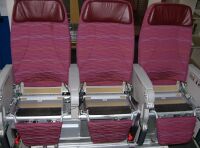 |
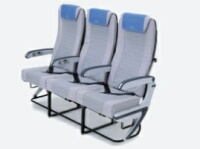 |
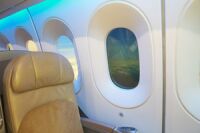 |
|
Cutting weight with carbon fibre/PPS aircraft seating |
Economy class carbon fibre aircraft seating |
Composite window frames for Boeing 787 Dreamliner |
Also train and bus interiors are made more and more in composites, due to
weight savings. Important in these applications are the FST (Fire, Smoke and Toxicity)
regulations, to prevent passengers from suffocating.
Diab has developed a fully recyclable thermoplastic core material for use in interior
panelling, floors and exterior panels for trains, trams, buses and coaches.
China Railway Long Dragon wants to refurbish interior trim components used on its
national railway system in advance of the 2008 Beijing Olympics. Together with GE
Advanced Materials, they want to co-develop high-strength flame-retardant components
for passenger train interiors.
Nova Bus, one of North America's leading manufacturers of urban and suburban buses,
uses complete composite floors for its buses.
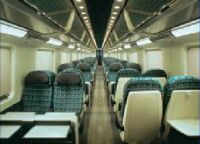 |
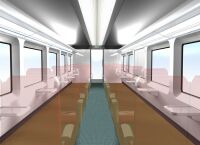 |
 |
|
Sandwich composites for interior panelling in trains |
Flame-retardant lightweight panels for passenger train interiors |
Complete composite floors for Nova urban and suburban buses |
Finally, in every-day commute traffic, you can maybe use a hybrid carbon/glass
fibre folding bicycle, or show off with a composite suitcase or briefcase.
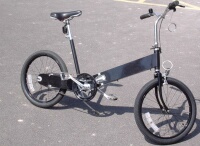 |
 |
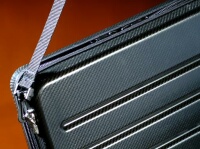 |
|
carbon/glass fibre folding bicycle |
Self-reinforced all-polypropylene CURV composite for Samsonite suitcases |
Briefcase in all-polypropylene CURV composite |
|
Public infrastructure
|
top
|
In public infrastructure, the use of composites is growing more slowly.
Main reasons are that weight reduction is a much less critical factor than in other
industrial sectors, and in civil engineering, the cost of composites is very high
compared to traditional building materials such as concrete and steel.
However applications are emerging in construction of (foot)bridges, utility poles,
repair of damaged concrete structures,...
Everywhere in Europe and America, a lot of bridges have been built in the 1960's-1970's,
in the period of vast expansion of the highways. Most of these bridges are at the
end of their lifetime or need urgent repair.
The first glass fibre-reinforced composite road bridge on the European continent
was installed in the German town of Klipphausen near Dresden, Germany. The bridge
is built entirely of glass fibre-reinforced profiles, and has the same load-carrying
capacity as similar bridges in steel or concrete. The bridge is the result of years
of research and development in the ASSET (Advanced Structural SystEms for Tomorrow's
infrastructure) project which has been partially financed by the European Union.
Because the structural requirements are less demanding, footbridges are constructed more
and more in composite. An advanced pedestrian footbridge spanning the Madrid-Barcelona
high-speed rail link has won international acclaim in the form of the Footbridge Award 2005.
As the bridge would cross a major rail link, minimising disruption to services
was a key priority for the Spanish railway authorities. Accordingly, the bridge
was assembled at the line side
and then craned into place, resulting in a railway possession time of only
three hours for the complete erection.
Glass fibre composite does not conduct electricity, which is also very important
as it means there is no magnetic interference with the electrified railway.
At the 2007 JEC-fair in Paris (the largest European exhibition on composite materials),
the world's largest carbon composite bridge was shown.
The carbon composite bridge is 24.5 meters long and 5 meters wide and weighs
only 12 metric tonnes. This makes the bridge about 30 times
lighter than a comparable concrete bridge.
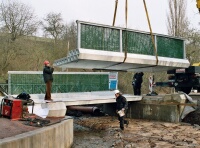 |
 |
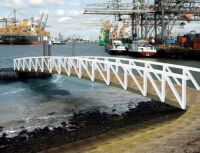 |
|
First glass fibre bridge on European continent |
Innovative glass fibre footbridge in Spain |
World's largest carbon composite bridge |
Gradually, bridges are also introduced on the highways, where load-carrying
capacity is much larger. A fibre-reinforced polymer bridge is constructed over the
M6 motorway in the UK, carrying 40 tonnes which is the standard for road bridges
on the highway network. The bridge uses a glass fibre composite deck on steel girders,
placed on reinforced concrete substructures.
Other applications of composites can be found in utility poles. Typically, glass
fibre-reinforced polyester resin is used for the composite poles, which combine high
stiffness and strength with low maintenance and easy installation due to very light
weight.
Finally, composites are an attractive solution for repair of damaged concrete structures.
Carbon fibre-reinforced strips are glued on the exterior surface of the structure
and help taking up the loads of the structure.
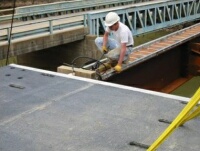 |
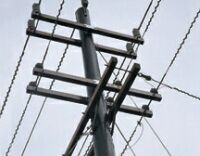 |
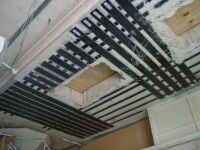 |
|
Composite bridge on UK motorway |
Composite utility poles |
External strengthening of concrete structures with fibre-reinforced composite |
|































































































